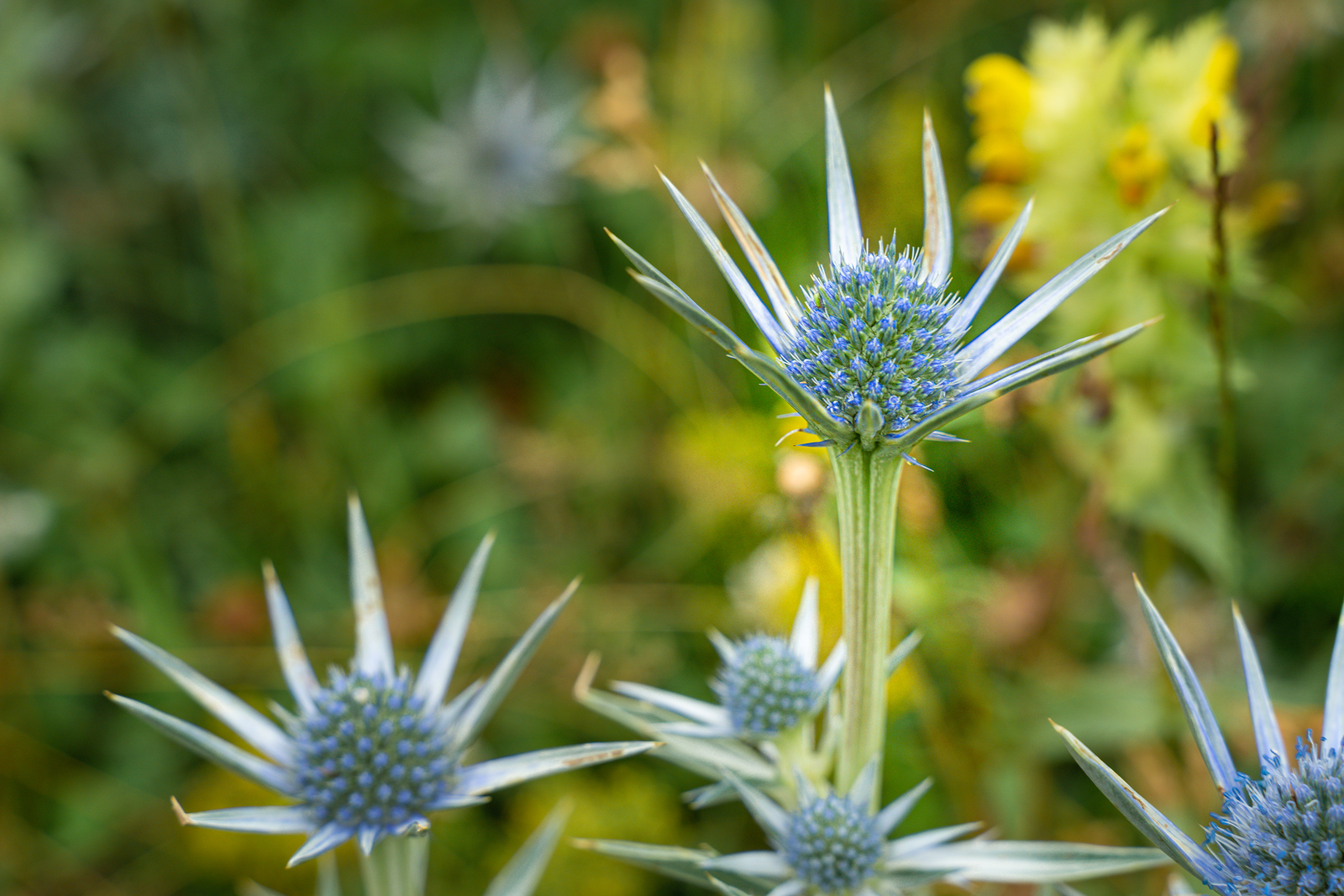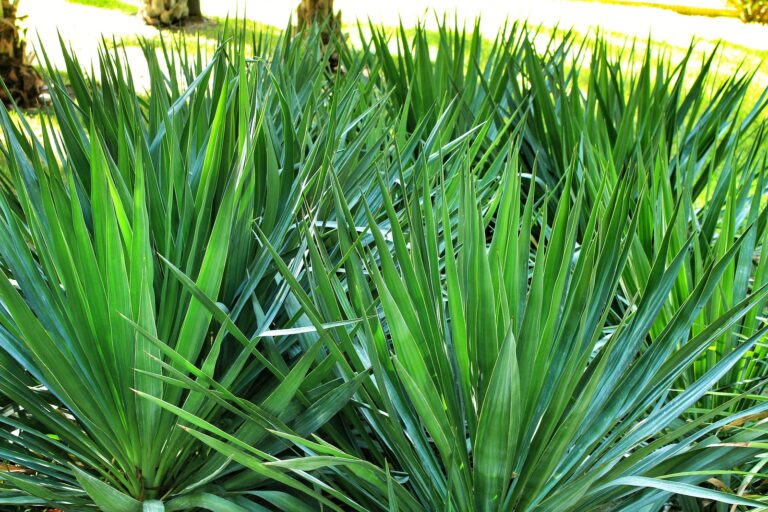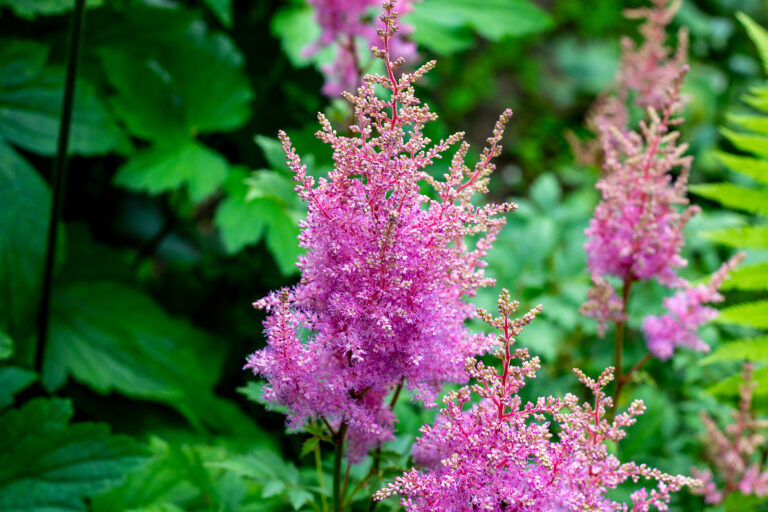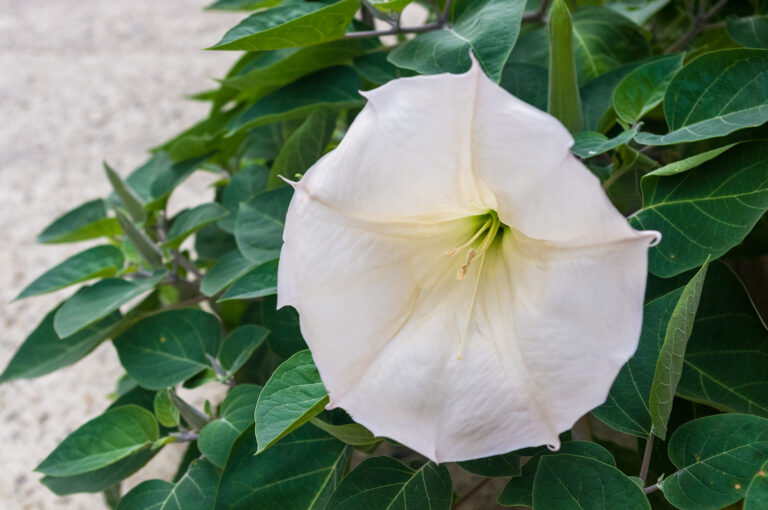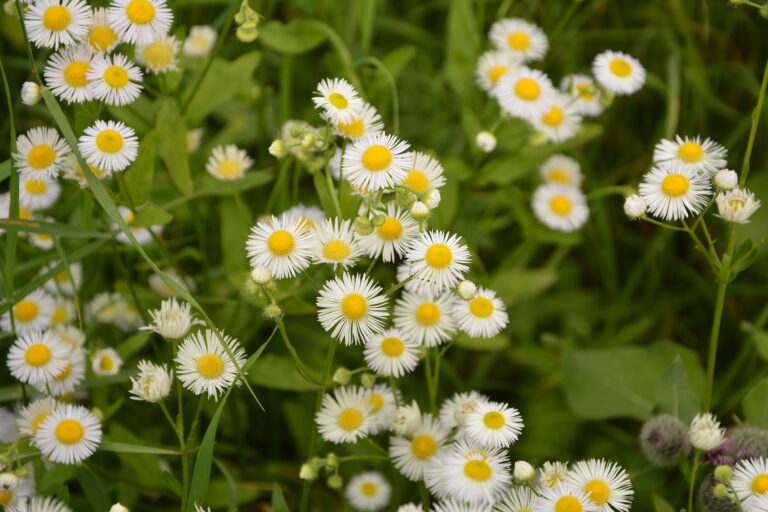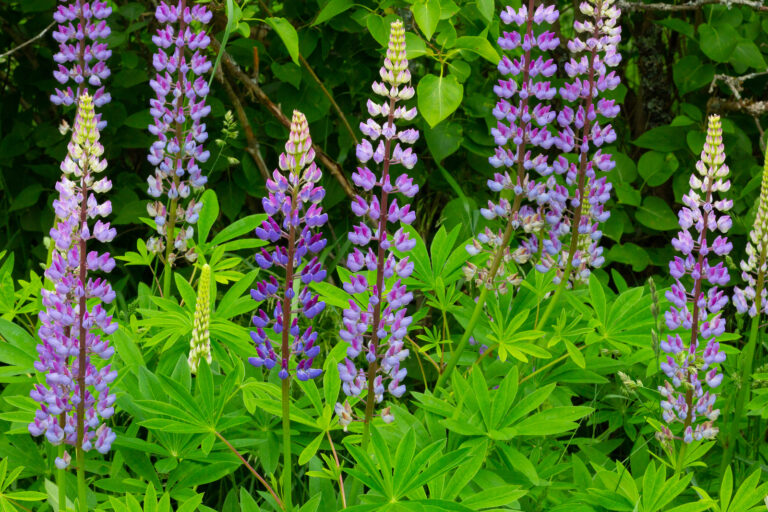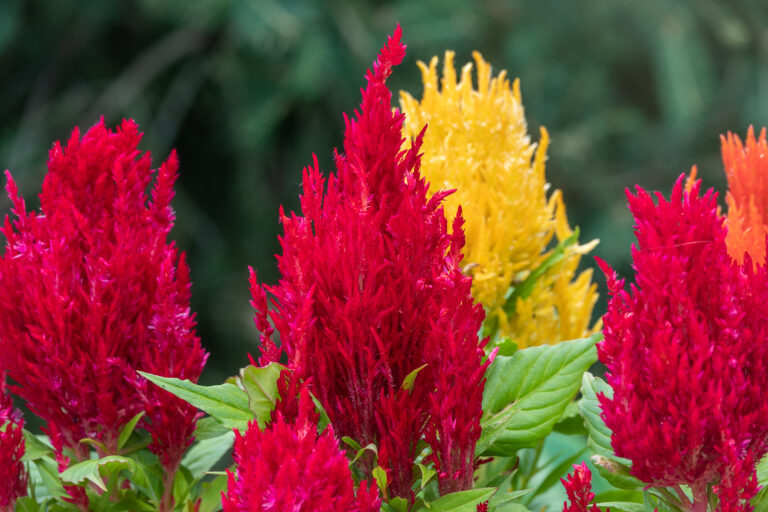How to Grow Sea Holly — Eryngium
Eryngium–commonly called sea holly–is an upright perennial with heart-shaped, divided green leaves. In summer, it produces tall blue stems topped with cone-shaped purple flowers surrounded by spiny bracts.
Eryngium is stiff-branched and thistle-like. There are 230 species in the Eryngium genus; some are fibrous-rooted and some are tap-rooted. Eryngium self sows.
Eryngium is an excellent cut and dried flower.
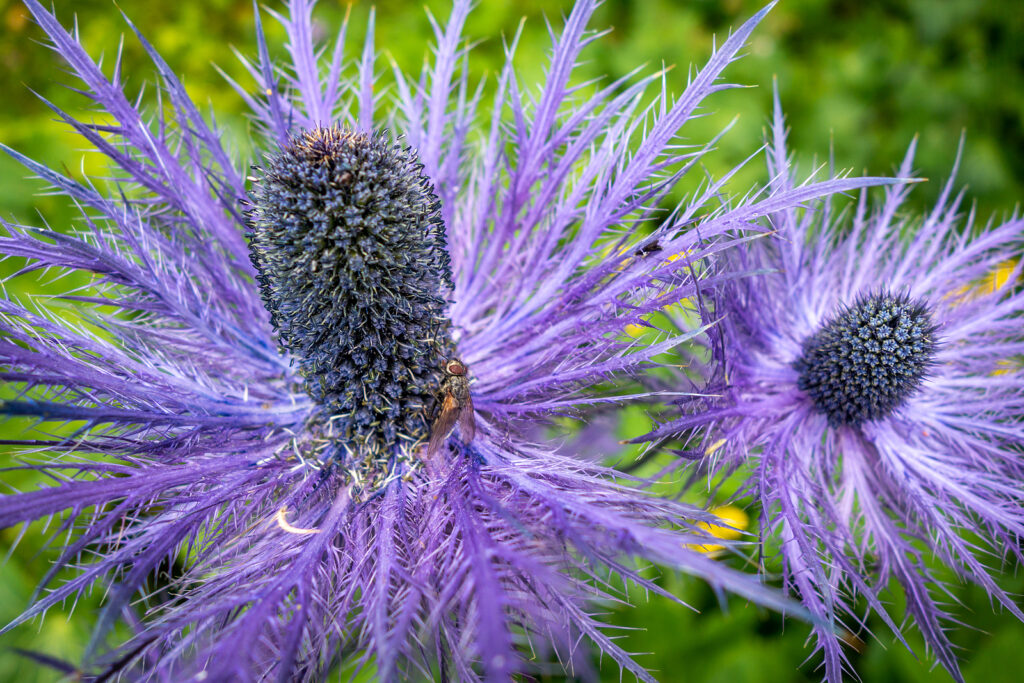
Get to know Eryngium
- Plant type: Perennial
- Growing Zones and range: Zones 2 to 8 depending on the variety
- Hardiness: Hardy to -20°F (-29°C)
- Height and width: 2 to 7 feet (.6-2.1m) tall, depending on the variety
- Foliage: Leaves are sparse, dark green, deeply cut, and spiny toothed.
- Flowers: Tiny flowers are borne in dense, rounded, conelike umbles with a ruff of stiff, spiny bracts at the base
- Flower colors: Blue, white
- Bloom time: Midsummer to frost
- Uses: Middle of borders; textural effects; dried arrangements
- Common name: Sea Holly
- Botanical name: Eryngium spp.
- Family: Apiaceae
- Origin: Europe, North Africa
Where to plant Eryngium
- Grow Eryngium in full sun.
- Eryngium will grow in poor, dry, and sandy soil. It grows well near the seaside.
- Eryngium will tolerate heat and drought.
Eryngium uses and companions
- Use Erynigium in bed and borders; beautiful against a dark background when backlit.
- Eryngium is a good fresh-cut or dried flower.
- Good garden companions for Eryngium include Artemisia, Limonium latifolium, Oenothera, Zauschneria.
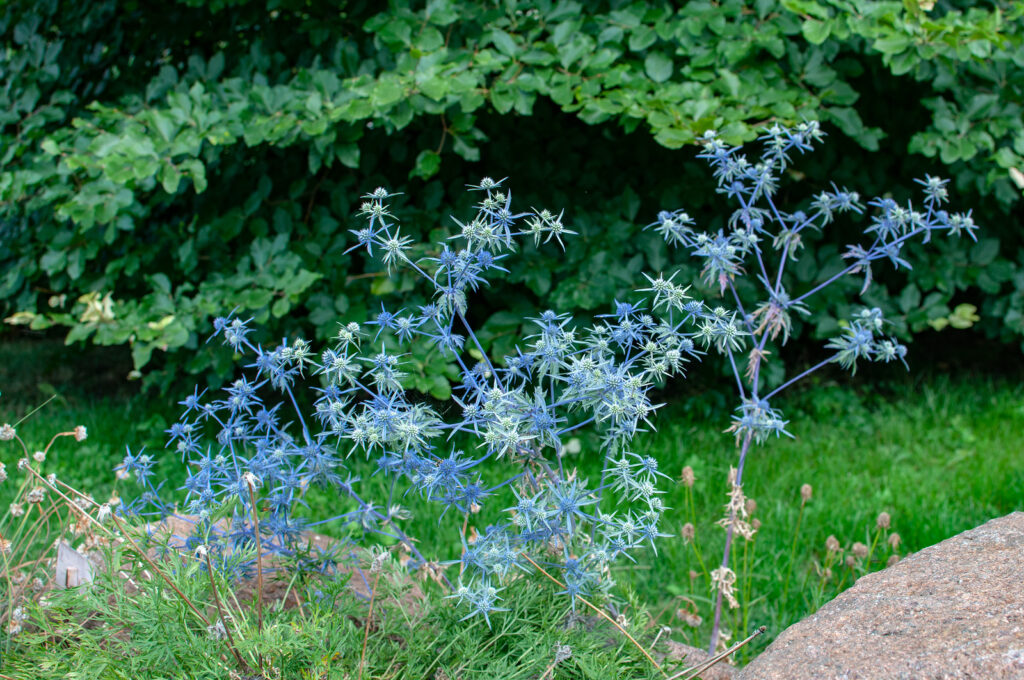
When to plant Eryngium
- Set established Eryngium plants in the garden in spring. Mature sea holly does not like transplanting.
- Sow seeds in spring.
Planting and spacing Eryngium
- Space Eryngium 2 feet (.6m) or more apart.
- Sow seed 1/8 inch deep in containers or evenly prepared soil.
How to water and feed Eryngium
- Eryngium needs moderate water; established plants are drought tolerant.
- Fertilizing Eryngium can cause plants to grow tall and flop over.
Eryngium care
- Eryngium is an excellent cut and dried flower.
- For drying, pick just before bloom has fully opened and hang them in a warm, dry, dark place.
Eryngium pests and diseases
- Eryngium is prone to root rot in wet soil especially in winter.
- Sooty mold is a problem in humid conditions.
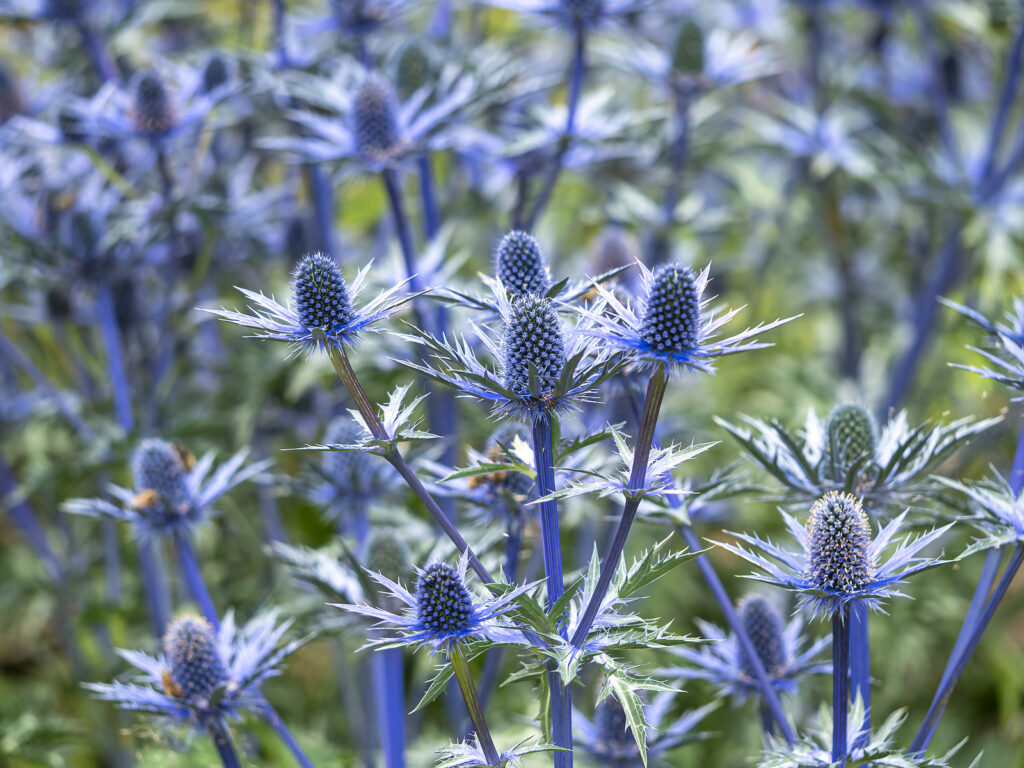
Eryngium propagation
- Propagate Eryngiumgium by separating small plantlets from the base of the clump.
- Tap-rooted plants are difficult to divide.
- Erynigium seed germinates in 12 to 20 days at 68° to 70°F (20°-21°C).
- Plants self-sow and seedlings are easily moved.
Eryngium varieties to grow
- Erynigium agavivolium is an evergreen species that grows to 5 feet tall with greenish-white flower heads with spiny bracts.
- E. alpinum grows to 2 feet tall with deeply cut blue bracts; ‘Blue Star’ is a good variety.
- A. amethystinum, amethyst sea holly, grows to 2 feet tall bears round, metallic blue flower heads with silver-gray bracts; s cold hardy in Zones 2-8.
- E. giganteum, giant seas holly is a short-lived perennial that grows to 3 feet tall; bears steel blue flowers,
- E. pandanifolium, giant sea holly, grows 6 to 7 feet tall and 4’ wide in Zones 8-10.
- E. planum, flat sea holly is an evergreen species that grows to 3 feet tall and bears pale steely blue flowers surrounded by blue-green bracts.
- E. yuccifolium bears sword-shaped blue-green leaves and whitish-green flowers; grows to 4 feet tall.

